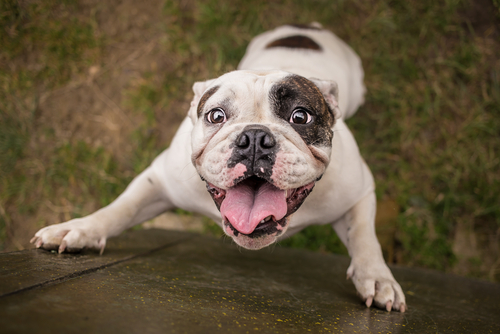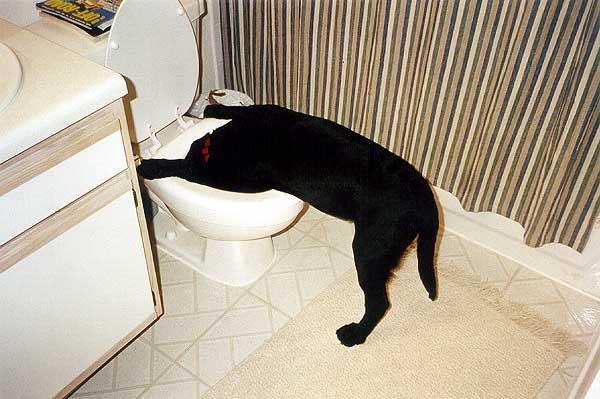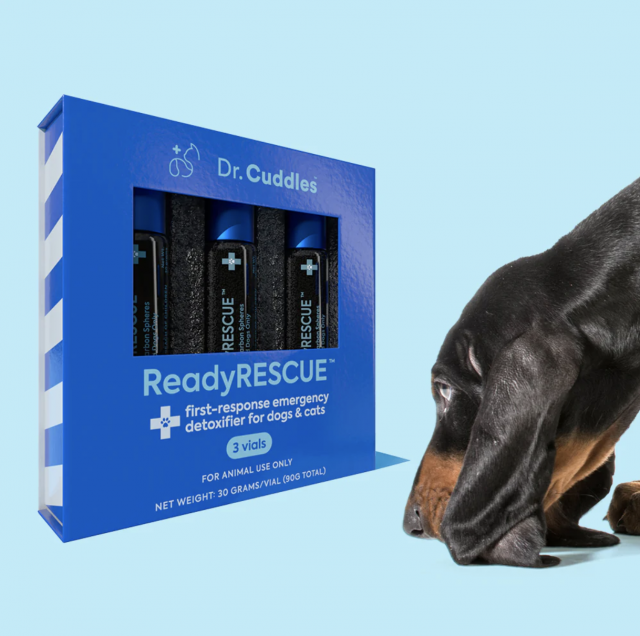iHeartDogs is reader-supported. When you buy via links on our site, we may earn an affiliate commission at no extra cost to you.
I saw a dog yesterday for helping her canine buddy tear apart a bag of Snickers minis. Her owner was not sure how much each of them had eaten, but this little dog was the older and smaller of the two. She had already vomited four times. The other dog was acting normal, and it is a good thing because even small amounts of chocolate can cause vomiting and hyperactivity.
Milk chocolate and white chocolate are the least dangerous, then dark chocolate, and then baker’s chocolate, which contains the highest theobromine levels.
It seems that every Easter and Halloween, as bags and baskets of candy sit on countertops everywhere, I inevitably see a large volume of colorful, chocolate-scented vomit. Chocolate contains two different components that are toxic to dogs: theobromine and caffeine. The caffeine itself can cause tremors, tachycardia (increased heart rate), arrhythmias, and potentially serious cardiovascular side effects, but theobromine is toxic outright. Serious reactions can occur in dogs after ingesting about 100 to 150 milligrams of theobromine per kilogram of body weight. Even lower doses require medical treatment since we do not know how severely each individual dog can react.

What do I do if my dog eats chocolate?
Thankfully, most people notice the missing candy, suspect the guilty canine, and are able to call me quickly. I have never lost a patient to chocolate ingestion… yet. If your dog eats chocolate, please call your vet and let them help you decide how much of an emergency you have. It is absolutely best to see the vet before the chocolate has time to digest and cause toxic effects. Make sure you have a reasonable guess of how much chocolate and what kind so your veterinary professional can advise you. If your dog is already trembling and vomiting, don’t delay and go to your vet or animal ER.
I remember specifically one little Westie for whom I had to induce vomiting. She had not had the chocolate in her stomach long (since her owner caught her “in the act”), so when we induced vomiting, she produced melted chocolate with pale pink and yellow stripes in it. For a while, my whole treatment room smelled of chocolate and peanut butter. I am not sure I will ever feel the same about Reese’s cups and M&Ms.

The best rule of thumb is never to assume your dog cannot reach something. I have had patients who climbed the backs of chairs to leap to countertops and then pull things off high shelves. They watch us all the time, soundlessly observing. They know when we are eating, and they smell that it is something tempting. They watch where we store it and return to the spot when they are bored or hungry. Never underestimate a motivated canine! And remember… sweets are not quite as sweet when you see them again.
Be prepared and act fast: Keep Dr. Cuddles’ ReadyRESCUE emergency detoxifier on hand if you have a dog who likes to dig through the trash, counter-surf, or sneak treats they shouldn’t. ReadyRESCUE is a veterinary-grade detoxifier that can buy you precious time on your way to the vet if your dog eats toxic items including chocolate, grapes, onions, and more.

